Make Your Matcha!
WHY SHALL WE DRINK MATCHA?
Matcha tea (抹茶) has been part of the Japanese tea tradition for nine centuries and has become one of the most recognizable emblems of Japanese culture in the 20th century. Matcha is the ‘greenest green tea’, the only tea drunk whole when dissolved in water. In Japan, it is not only part of ceremonies but also a part of everyday life. Nowadays, it has an increasing number of appreciators in the West as well. It is the most divisive tea among tea consumers trying matcha for the first time: a dense, intense green rush to impress the senses.
Matcha and the recently fashionable “matcha latte” have become an alternate for coffee for many people, as their high caffeine content makes them excellent morning pick-me-ups. We now think of matcha as a superfood because it is the food with the most antioxidants and complex health-promoting properties. The key active ingredients in matcha tea are the potent antioxidants, catechins, caffeine, and theanine. The relaxing effect of the latter significantly affects and refines the harsh effects of caffeine and gives matcha an extremely long-lasting but gentler refreshing effect than coffee.

WHAT TOOLS ARE NEEDED TO MAKE MATCHA?
The tools for making matcha are only a fraction of the tools used in the whole tea ceremony. Below, we list some of the most important ones:
Matcha: well-stored, good quality, original Japanese green tea powder, preferably in a box, not older than one year.
Soft water: purified or filtered water of low concentration, and for bottled water, we recommend picking one with a total mineral content below 200mg/liter.
Chawan: a large ceramic cup without handles in which matcha can be easily mixed and consumed. The cups are irregular in shape in keeping with the Japanese natural style. They are often plastic, thicker, have good heat retention, and fit well in hand. They are soft to the touch and have a muffled sound so that the chasen barely hisses when stirred. The most famous ceramic styles are Hagi, Bizen, Raku, and Shigaraki.
Chasens: 80-100 branch bamboo stirrers, which should be considered the essential stirrers! Without them, it’s hard to get the hang of matcha because the result will be a bit like not using a coffee machine to make coffee. It will become zingy and taste like water. The magical Chazen is handmade by splitting one end of a single bamboo stalk into 80-100 branches and tying them together. It is a flexible, lightweight, but durable little broom. This abundance of flexible twigs allows perfect mixing and whisking, producing a smooth, velvety, frothy blend of milk powder and water.
Chashaku: a curved bamboo teaspoon, making it easier to pick from the box and dispense. A Chashaku spoonful of matcha is 1-1.5 grams.
Tea towel or fukusa: wipes the Chawan dry after steeping before adding the tea powder. Wet Chawan will stick to the bottom and make the tea lumpy.
Matcha sieve: any clumps that may have formed due to moisture are re-dusted by sieving, resulting in a much creamier and frothier result.
Tray: matcha is exceptionally green and easy to powder. It looks fancier on a tray and saves us a few wipes and mop-ups.
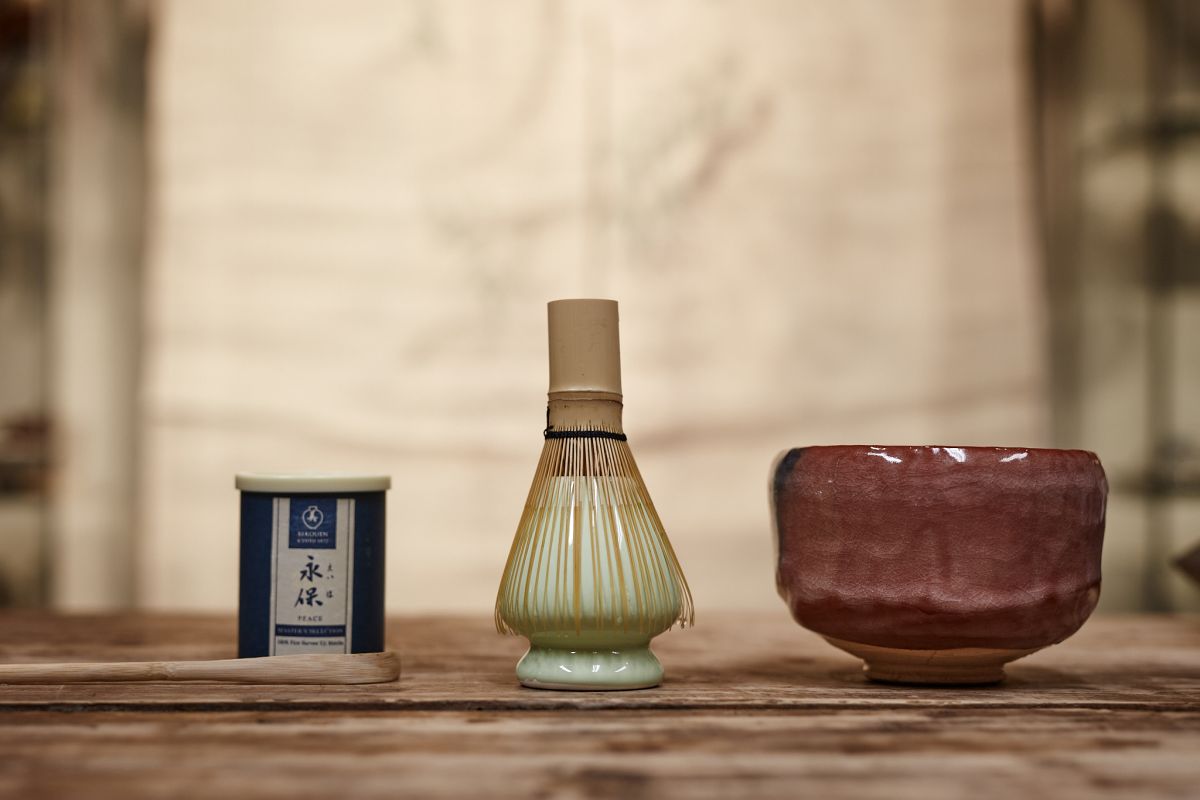
THE STEPS TO MAKE MATCHA TEA
STEP 1. To make matcha, heat a teacup using hot water and steep the chasen in that for a few minutes to let it soak and soften its fibers. The more elastic fibers break less likely and are much easier to blend. A regularly soaked chasen will be more resistant and durable in the long term.
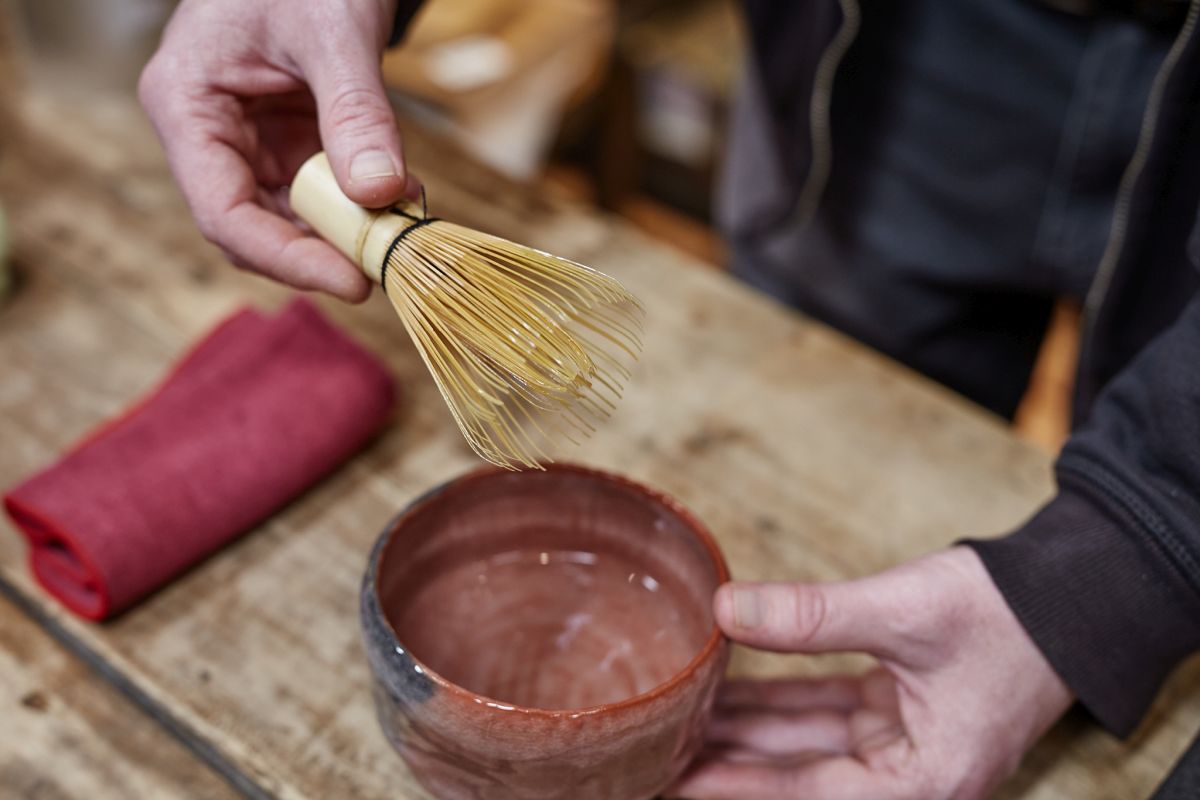
STEP 2. Wipe the chawan dry with a clean, lint-free cloth to prevent the milk powder from sticking to the bottom.
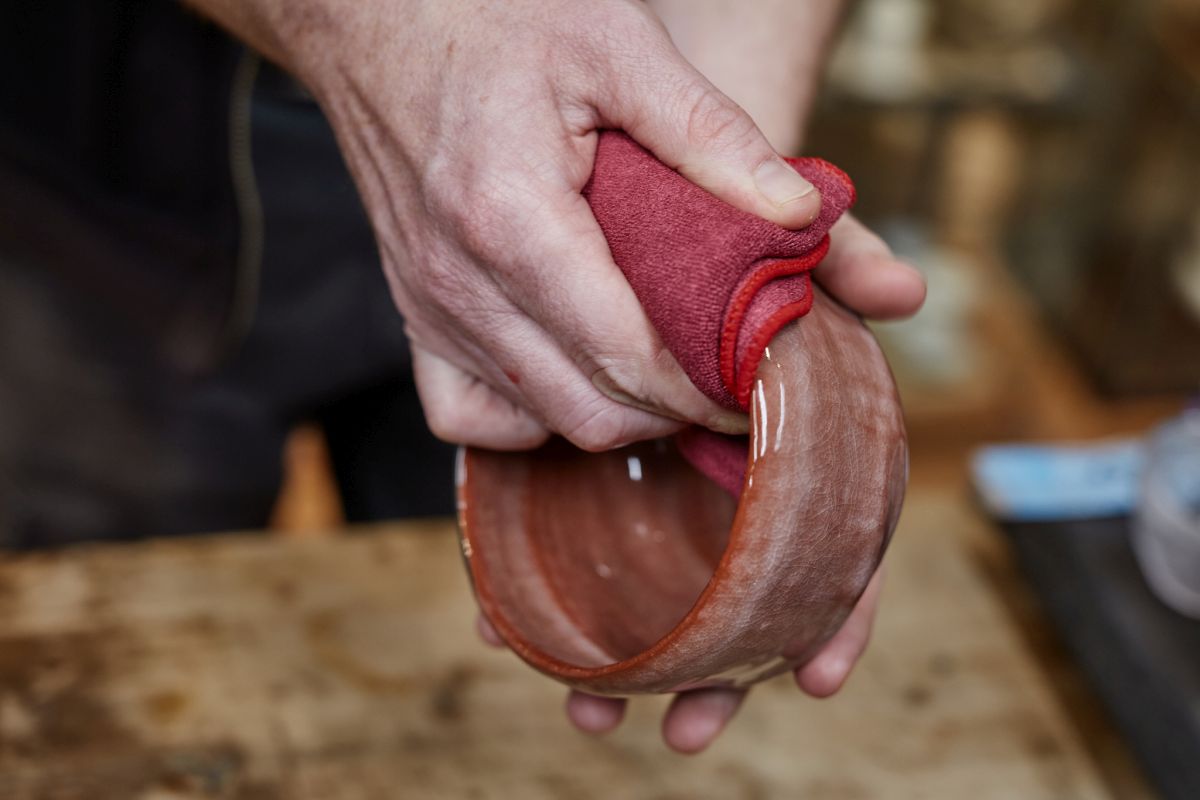
STEP 3. With a chashaku (teaspoon), add about two spoons of tea powder to a sieve placed over the chawan (cup) and strain it into the chawan. The sifted matcha is easier to stir, the tea is less clumpy, much more uniform, and creamier.
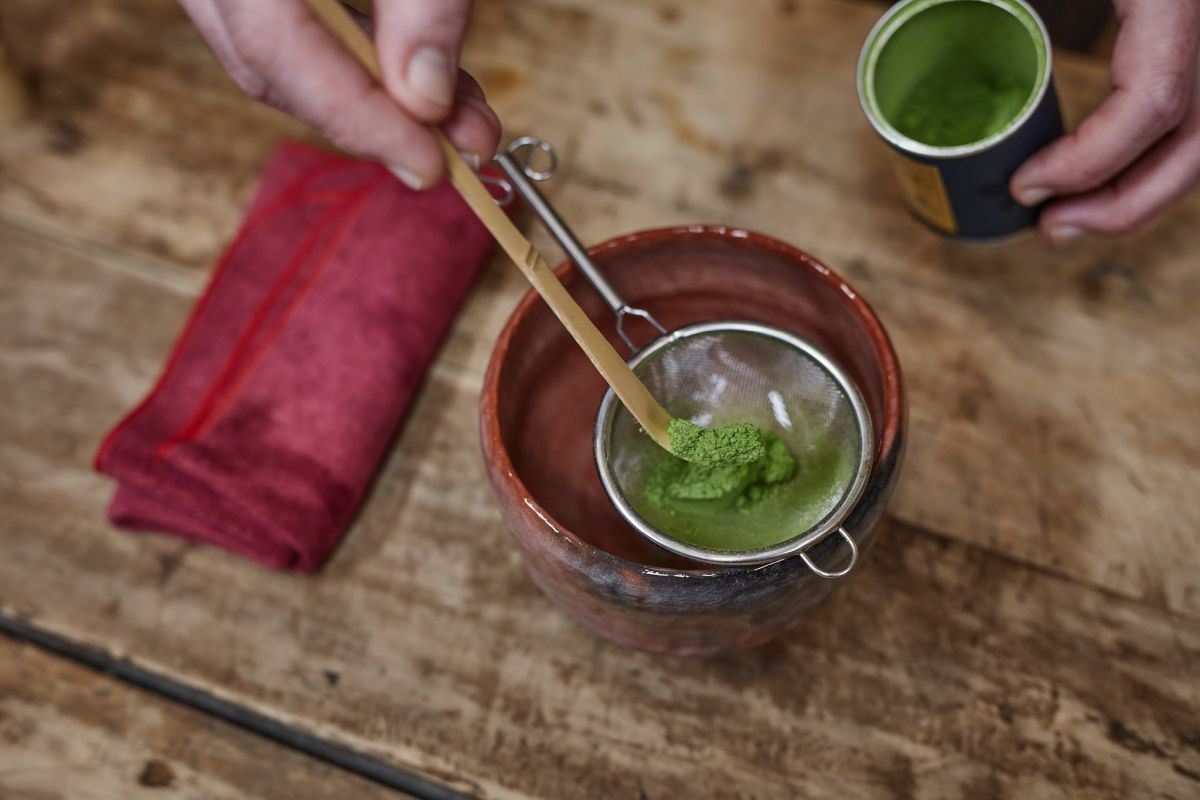
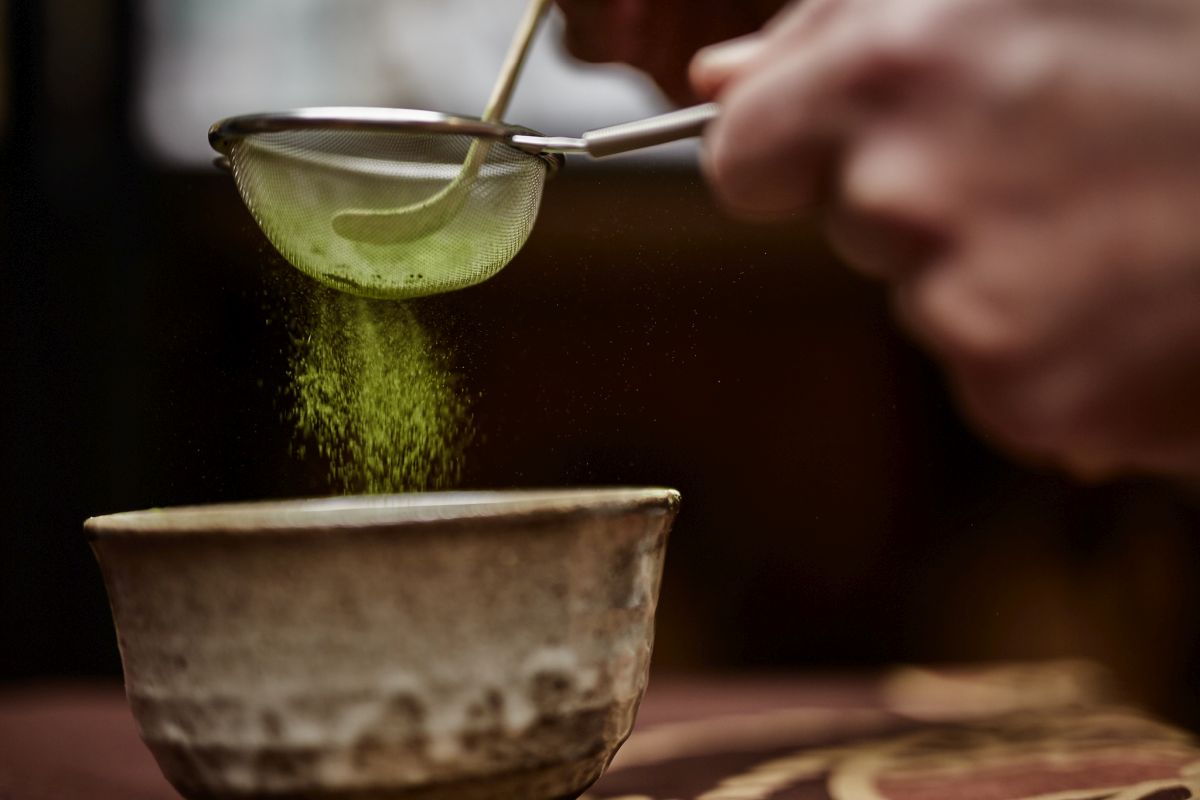
STEP 4. Add approximately 80-100 ml of hot water (50-80 C°) to the matcha. Carefully pour around the tea straw, distributing the water well from the outside of the straw towards the center of the pile in a circular motion.
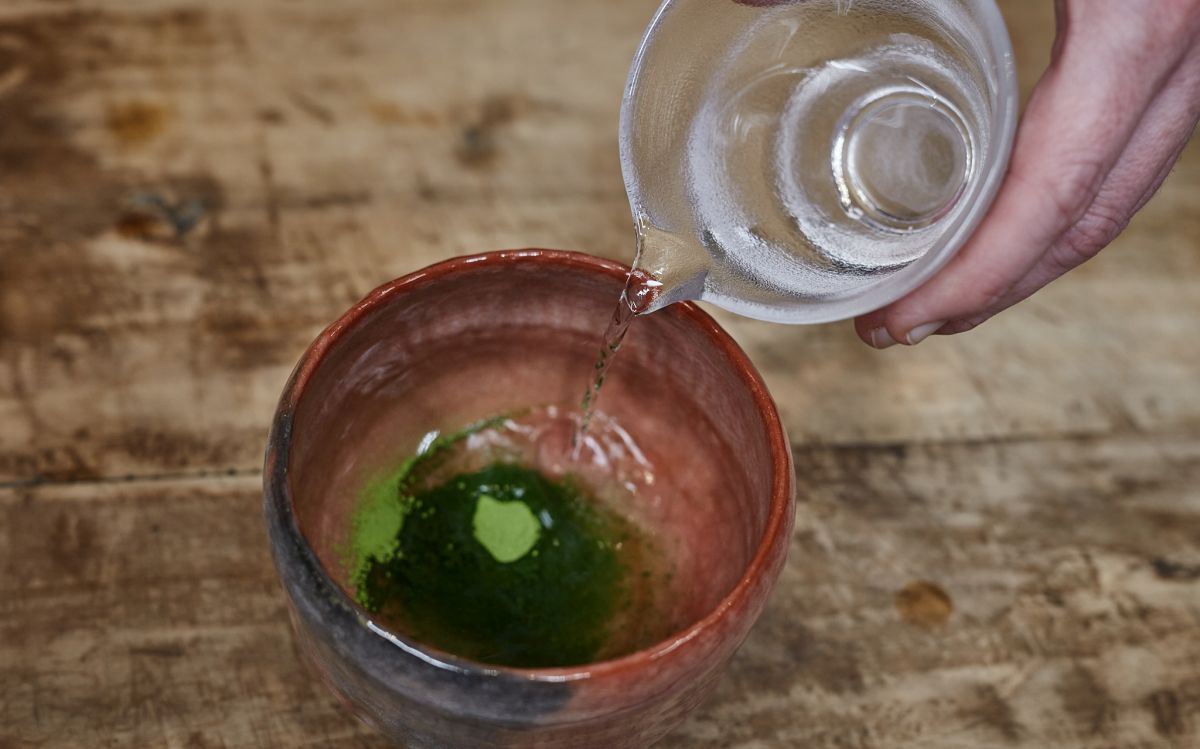
STEP 5. Using quick “W” motions, move the chasen around the bowl, stirring the tea powder into the water until frothy. It is very important to start mixing vertically, perpendicular to the edge of the tray or table, and with a loose and vigorous wrist movement. Do not stir in a circular motion like soup. The chasen should only press against the bottom of the glass with its weight, so it is easy to move and makes a soft sweeping sound. This operation takes 1-2 minutes. Don’t expect to get a nice foam on the first try, but by the fifth time you’ve made it, you’ll possibly have managed to blend it well. It takes patience and practice.
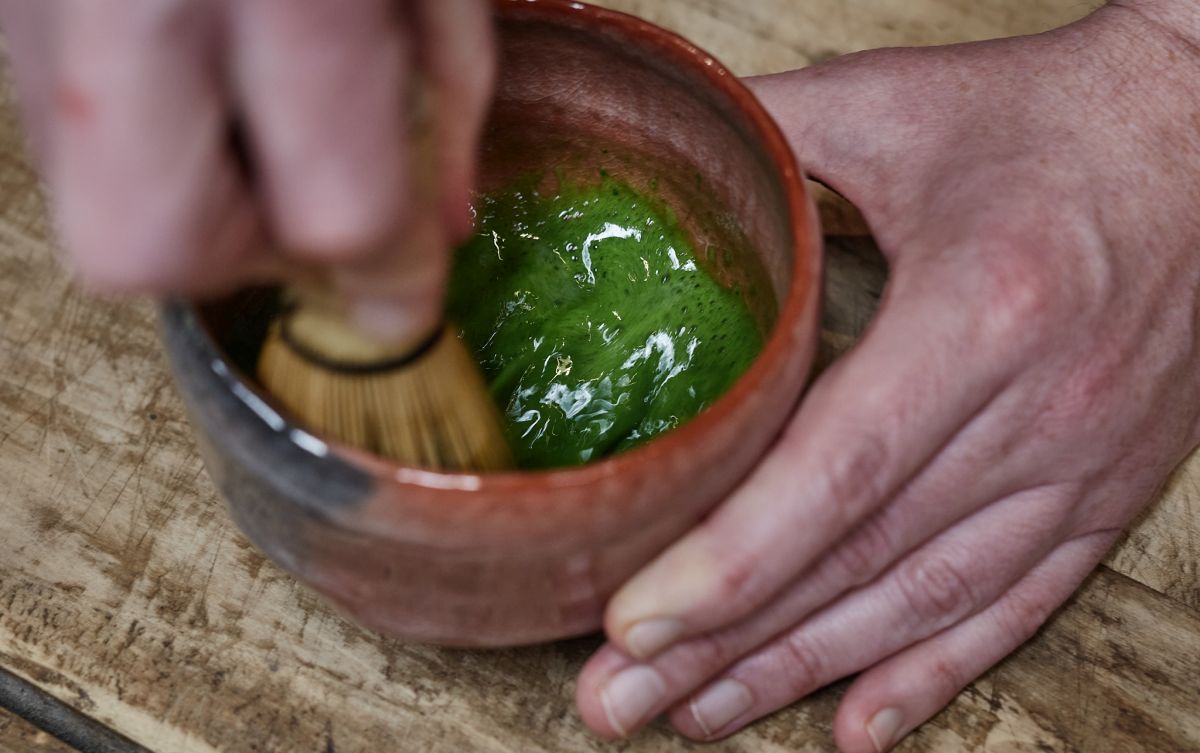
STEP 6. Try to consume the frothing tea as soon as possible, with a few sips, and enjoy the fresh aroma, the umami taste, and the pleasant, refreshing effect that lasts even longer!
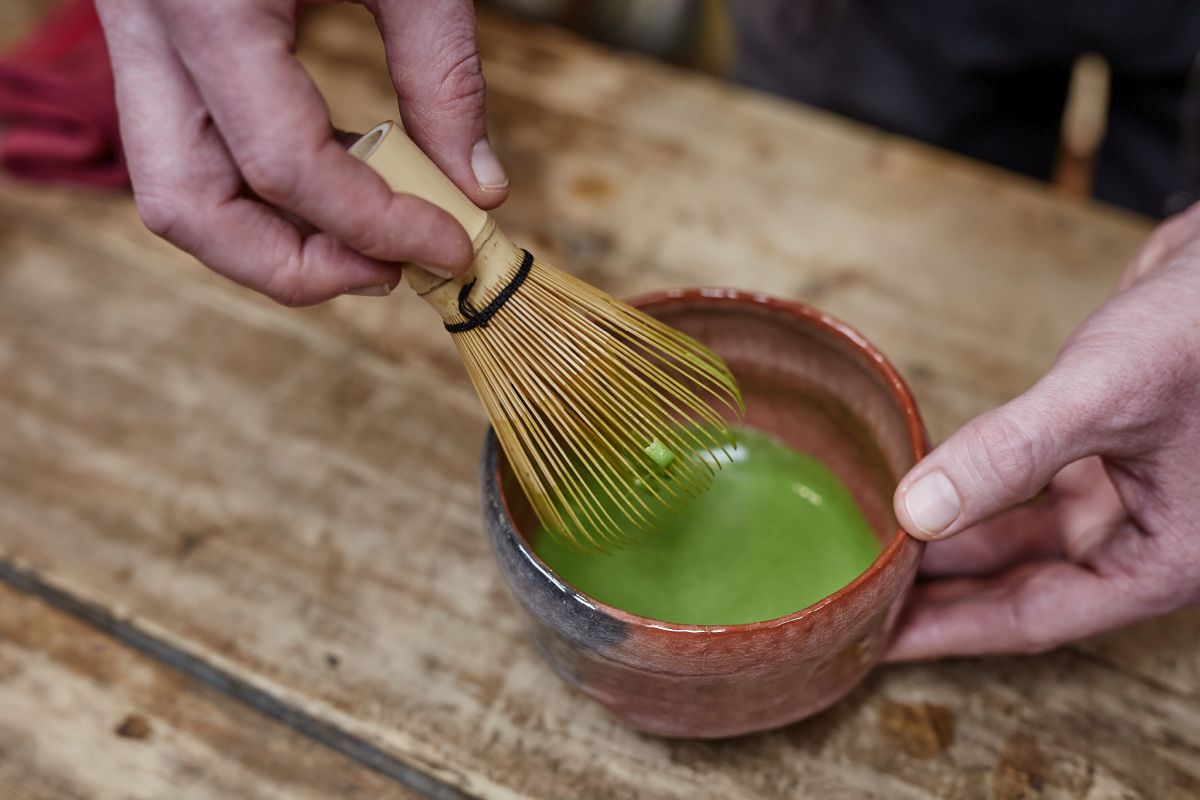

STEP 7. Finally, clean your utensils, especially the bamboo brush! The tea powder sticks to the bamboo spoon, and the blender dries the surface, making the tool more fragile. Do not wash a high-quality Japanese ceramic bowl with chemicals. Rinse it in hot water instead, then let it dry.
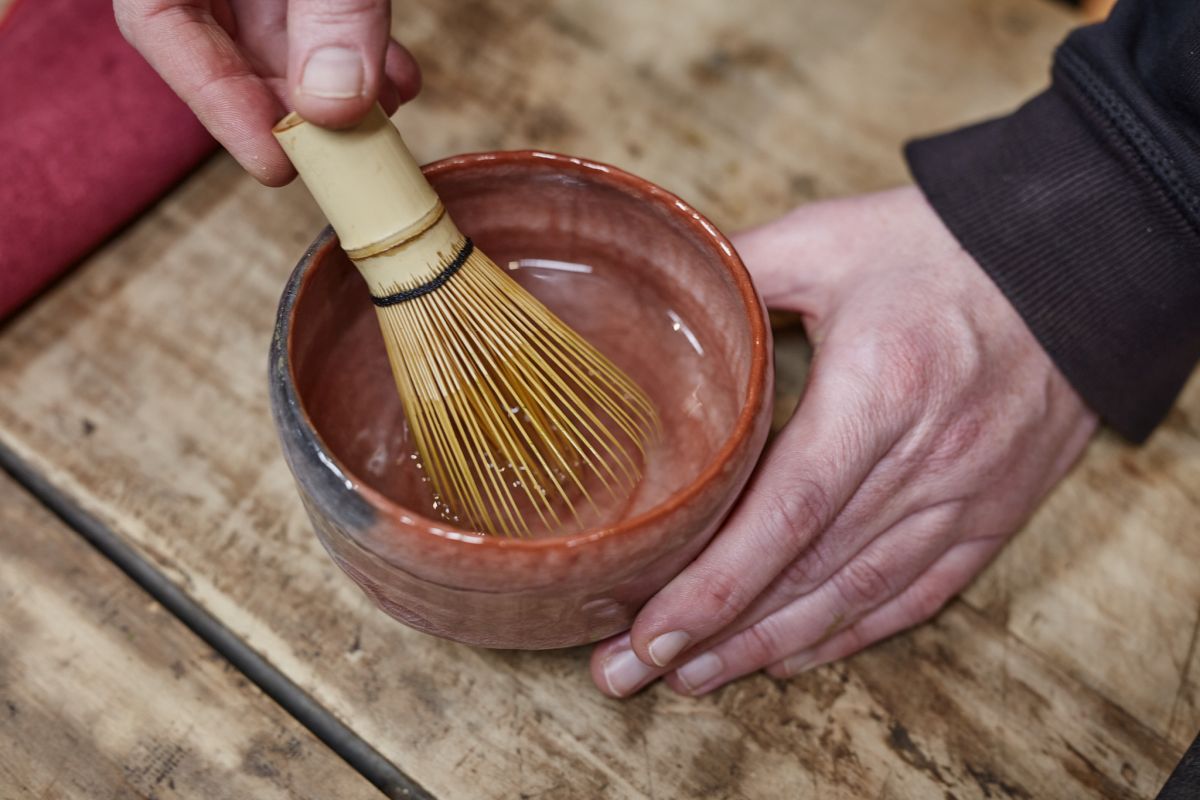
KOICHA AND USUCHA
There are two main sorts of matcha, the thicker and stronger Koicha and the lighter and dilute Usucha. Since Koicha is prepared from higher quality tea powder in the traditional ceremony, renowned producers and tea houses usually have both Koicha and Usucha matcha on the shelves. Koicha matcha is a finely ground, darker colored tea made from more exotic leaves, while Usucha matcha is a bright-colored, lighter version.
To make Koicha, the strong or thick matcha, you will need three chashaku spoons of tea and one hishaku spoon (1 dl) of hot water per person.
For Usucha, the weak or dilute version of matcha, you will use 1.5-2 chashaku spoons of tea with one hishaku spoon (1 dl) of hot water per person, which can be further diluted.
